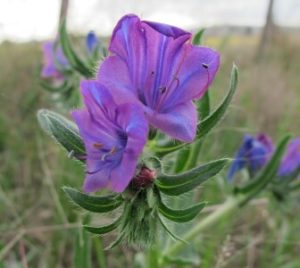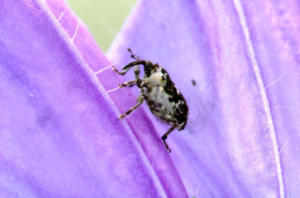Across the Cootamundra-Gundagai Regional Council (CGRC) region and indeed right across the Riverina there is a dramatic increase in Paterson’s Curse infestations this winter and spring. There are a few reasons for that. Primarily, coming out of drought that has left plant ground cover depleted and plant competition with weeds reduced. This has provided an opportunity for Paterson’s curse to make a come-back and ‘curse’ us yet again.
In previous years there has been great success with biological control agents working magic on Paterson’s curse. These are insects that consume the Paterson’s curse and have been responsible for successful Paterson’s Curse control over the last decade or so.
Another reason we are seeing more Paterson’s Curse this year is also because of drought conditions and now good rain is germinating seed store that has been in the seed bank for many years.
Many Riverina Local Government Areas (LGA’s) have been affected by Paterson’s Curse this season. Narrandera, Leeton, Coolamon, Junee, Temora, Snowy Valleys, Hilltops, Murrumbidgee, Bland, Lockhart, Hay, Carrathool, Wagga Cootamundra-Gundagai and Griffith are all shires that have felt the brunt of Paterson’s curse this season. Specifically, land that has had heavy grazing, land that has been disturbed, along with years of drought and wind impact will often result with Paterson’s curse presence with other weeds, potentially.
Snowy Valleys have been impacted, in addition, with drought and bushfires destroying biocontrol nursery sites. Drought has killed off biocontrol across many of the shires, which is so sad, considering the care that has gone into raising the agents. Many Riverina Council Biosecurity Officers are actively seeking biocontrol agents to re-establish nursery sites.
Paterson’s curse is highly competitive in pastures, outcompeting desirable plants without contributing to forage value. Paterson’s curse contains pyrrolizidine alkaloids, which are toxic to livestock, particularly horses, though sheep can graze it for a time. Prolonged grazing of Paterson’s curse is harmful, even to sheep, because the alkaloids eventually cause liver damage, especially if stock consume large amounts of this weed in winter and spring and then graze on common heliotrope over summer.
Impacts from Paterson’s curse and weeds, generally, that are often not focused on are the threat to biodiversity. Paterson’s curse invades native grasslands and woodlands, reducing viable space for desirable species.
At this stage in agriculture, we all need to be practicing IPM (Integrated Pest Management) as opposed to just relying on one method of control, which is mostly chemical. In the 80’s and 90’s we relied heavily on chemical application which left the industry throwing arms in air at a loss until biological control worked their magic and stepped into gear to bring Paterson’s curse into line.
The crown weevil and flea beetle have been the most successful biocontrol agents. The NSW Biological Taskforce and Local Councils across the State have been working consistently researching and building up biocontrol agent numbers for not only Paterson’s curse but also other biocontrol for other pest plants.
Patience must be exercised for biocontrol agents to build up in numbers to have a significant impact. Land Managers may be tempted to get the chemical out but if they can let the insects re-establish then nursery sites can have a good chance of establishing again. That should be easier with large Paterson’s curse infestations this year.
One landholder from Narrandera has had Paterson’s curse biocontrol on the family farm for around 17 years. Some paddocks were once heavily infested with Paterson’s Curse until biocontrol organically colonised the property after releases were done in the area. The owners stopped chemically treating and waited for the positive impact. It took around 5 years to get a good affect. Only isolated patches have popped up over the last couple of years resulting from drought.
Chemical control has its place. Land Managers can contact agricultural reseller for specific chemical details and information on where to access pest plants biocontrol or contact Cootamundra-Gundagai Regional Council Biosecurity Officers on 1300 459 689.
-END-





